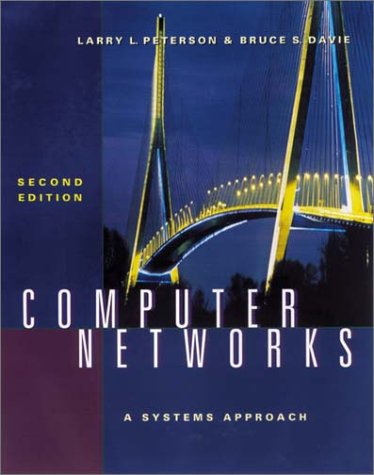What do you think?
Rate this book


In the beginning, Larry Peterson and Bruce Davie discuss why networks are important and talk about where networks may go in the long term. The authors then move right into a discussion of protocols. There's a fascinating section--complete with plenty of C code--in which the authors actually develop a network protocol called A Simple Protocol (ASP). They compare switching and packet networks and emphasize tunneling protocols. In the internetworking chapter, you'll learn practically all there is to know about Internet Protocol (IP). The concluding chapters talk about traffic management, congestion reduction, and high-speed networking technologies.
Computer Networks reveals the guts of what's going on with computers that share data. Though way out of the league of most computer users, true geeks with an interest in networking will find what they need here.
748 pages, Paperback
First published January 1, 1996
- Updated material on wireless technology, particularly the various flavors of 802.11 (Wi-Fi) as well as cellular wireless technologies including the third generation (3G) and emerging 4G standards.I felt chapter 8 (Network security) was one of the least successful, and did not quite hit the sweet spot between excessive detail and sweeping vagueness. I do not consider the section on firewalls sufficiently complete and the example systems were, in my opinion, dealt with far too briefly. In my copy of the fifth edition, the equations in chapter 2 are missing operators (multiplication, division, subtraction and addition signs) which is really annoying. Why this should happen in a fifth edition is beyond me (this is not new material!) and whether all fifth editions have the same problem or whether this happens only for copies typeset by diacriTech, India is beyond me.
- Updated coverage of congestion control mechanisms, particularly for high bandwidth-delay product networks and wireless networks.
- Updated material on Web Services, including the SOAP and REST (Representational State Trnsfer) architectures.
- Expanded and updated coverage of interdomain routing and the border gateway protocol (BGP).
- Expanded coverage on protocols for multimedia applications such as voice over IP (VOIP) and video streaming.